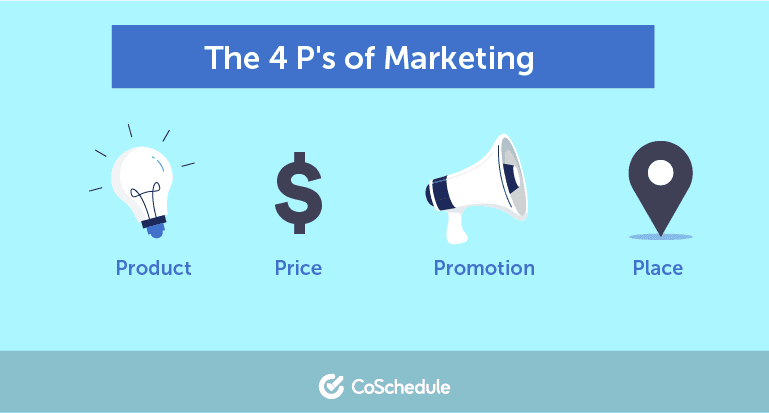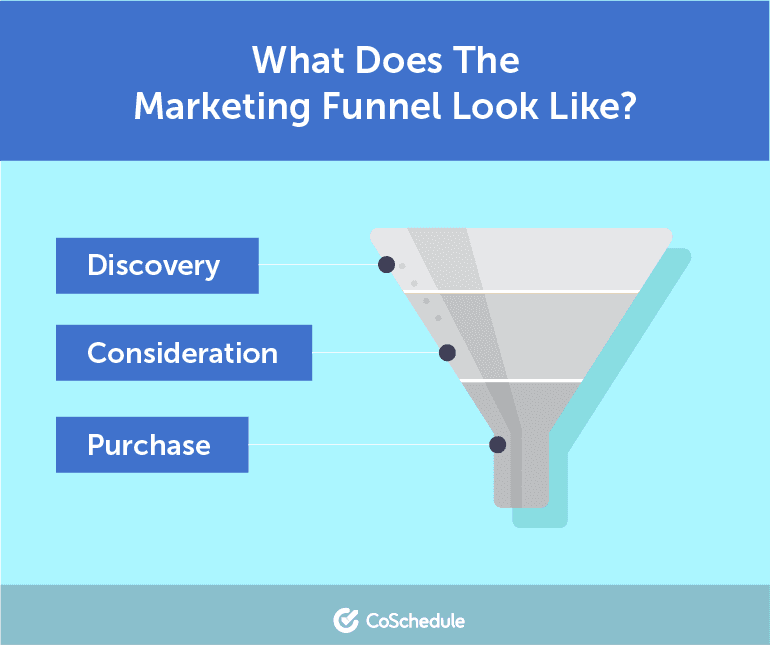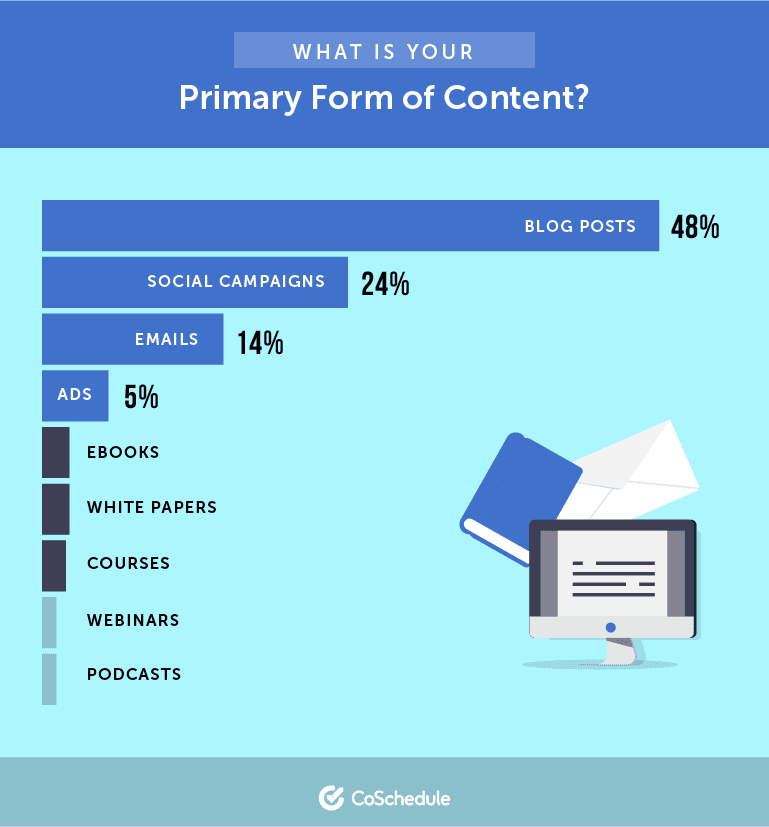Marketing Basics: 101 Guide to Everything You Need to Know
 Marketing is complex.
It encompasses tons of different disciplines, strategies, and tactics.
As a result, developing a basic understanding of how it works can be difficult. Learning the trade can take years of dedication and honing your craft, oftentimes in a handful of specific areas (such as strategy, copywriting, or analytics).
Like a lot of things, though, future success starts with solid fundamentals.
And if you’re looking to learn, you’ve come to the right place.
This post will cover everything you need to get started on your marketing journey. Think of it like the ultimate 101 guide, packed full of actionable advice you won’t learn in the classroom.
It’s also laid out to be easy to understand, turning complicated concepts into easily digestible chunks of information.
Bookmark this page, then get down to learning.
Marketing is complex.
It encompasses tons of different disciplines, strategies, and tactics.
As a result, developing a basic understanding of how it works can be difficult. Learning the trade can take years of dedication and honing your craft, oftentimes in a handful of specific areas (such as strategy, copywriting, or analytics).
Like a lot of things, though, future success starts with solid fundamentals.
And if you’re looking to learn, you’ve come to the right place.
This post will cover everything you need to get started on your marketing journey. Think of it like the ultimate 101 guide, packed full of actionable advice you won’t learn in the classroom.
It’s also laid out to be easy to understand, turning complicated concepts into easily digestible chunks of information.
Bookmark this page, then get down to learning.
Marketing Basics: The 101 Guide to Everything You Need to Know by @Ben_CoSchedule via @CoSchedule
Click To TweetDownload Your Free Marketing Resources Bundle
Since this is such an enormous topic, it’s tough to cover everything within a reasonable amount of space. That’s where these additional resources come in. Grab this bundle and you’ll get:- Marketing Strategy Guide (PDF): Get an in-depth education on strategy.
- Marketing Calendar Template: Your all-in-one project planning and scheduling tool.
- Beating Makeshift Marketing: When it’s time to build your marketing tool stack, see what makes CoSchedule the best option for getting organized.
Learn New Skills Fast With On-Demand Marketing Courses
Want to learn new marketing skills? Jump-start your learning with the Actionable Marketing Institute’s on-demand marketing courses. Actionable Marketing Institute features 25+ marketing courses packed with templates, resources, and video tutorials designed to help you learn and apply what you’ve learned quickly, so you can start generating better results. View the entire course list of courses to learn more.
View the entire course list of courses to learn more.
What is Marketing?
In simplest terms, marketing is the act of driving profitable customer action. It spans the full scope of strategies and tactics organizations use to position products and services in the marketplace, and motivate target audiences to make a purchase.
Understanding the Marketing Mix and the 4 P’s of Marketing
For all its complexity, at its core, marketing revolves around four things: product, price, promotion, and place. Tactics and channels change, but these are the concepts everything else revolves around, and they’re principles that never change. Some models expand these basic principles to 7 P's, or another variation. But, for your purposes, these four should be sufficient for developing an understanding of how marketing works.
Product
This is what a company sells, whether that means a physical good, or a service (such as consulting, a subscription, or something else). From a marketing perspective, the following would need to be determined:- How many different product variations or lines should be sold? For example, a car manufacturer might strategize on which vehicle categories to build (such as family cars, SUVs, crossovers, or pickup trucks).
- How should they be packaged or presented? To make another example, if a company made replacement car floor mats, should they come in a box? A bag? Something else?
- How will it be serviced? This could include warranties, handling returns, and so forth.
Marketing works best when marketing teams communicate with product teams.
Click To TweetPrice
This is just “how much stuff costs,” right? Well, sure. But there’s more to it than that.Price means more than just what stuff costs.
Click To Tweet- What is the market rate per unit of a product? This requires some market analysis and competitive research to determine what’s a fair price for a product, given its cost to produce, and what people are willing to pay.
- How should discounts be timed and applied? Should the product be put on sale at certain times of year?
- Does it make sense to give customers options for payments? A car dealership might offer financing options, rather than expecting people to pay the full price up front.
Promotion
If a product launches but no one cares, does it even exist? Well, yeah, technically it does, but it’s just taking up space if no one’s buying it. Once a product is out there, it needs to be promoted so people know it exists.- Which channels will be used to promote the product? This includes online and offline channels.
- Where will it be promoted? Online? Offline? In stores? At events?
- What message needs to be communicated? What copy and verbiage will tell audiences what the product is all about, and encourage them to buy it?
Place
The right product needs to be in the right place for people to find it and buy it.- Where is the product distributed? Online? Offline?
- Will specific locations get the product? For example, if you sell cold weather clothing, you might not distribute as much to Florida and you might in Minnesota.
10 Key Areas of Modern Marketing to Understand
Spend a little bit of time researching marketing online and you’ll find references to all different areas of marketing. Here are some that are most likely to be relevant to your work.Content Marketing
The hype around content has been building steadily for years, and with good reason: people want to be helped and informed more than they want to be sold to and interrupted. The main idea behind content marketing is creating content that helps inform your audience and solve their problems. This achieves a few important goals:- Building an audience.
- Establishing authority.
- Driving sales.
Email Marketing
When it comes to driving conversions, it’s tough to beat the return on investment of email marketing. Different studies cite different figures, but it’s generally accepted that it drives around 3,800% to 4,200% ROI (meaning that for every dollar spent, it produces $38 to $42 in revenue).Social Media Marketing
Organic reach on popular social networks is declining on popular platforms like Twitter and Facebook, but social media marketing is far from dead. It’s effective for building brand awareness, developing community, and getting your content and products in front of new people.Online Video Marketing
Did you know that over 400 hours of video gets uploaded to YouTube every minute? That’s incredible. So is the fact that it’s the world’s second largest search engine (second only to Google, which owns YouTube, and even bigger than Bing and Yahoo combined). It’s not the only video platform out there for marketers to know about, either. Wistia is practically the industry-standard for hosting embeddable web video, and Vimeo is a fantastic place for creatives. Plus, social video on Facebook (and to some extent, Twitter as well) is also becoming increasingly important.Advertising and Pay-Per-Click
Have you ever seen those ads at the top of search results? Those are pay-per-click (PPC) ads. PPC advertising offers marketers excellent opportunity to sell products directly to searchers. It’s also great because it makes it possible to see exactly how much you’re spending vs. how much revenue your advertising efforts are generating.Search Engine Optimization
Few, if any, tactics or channels drive more traffic on average than search engine optimization.Few digital marketing tactics drive more traffic than search engine optimization.
Click To TweetPublic Relations
Even in an era packed with new and flashy channels and tactics, good old-fashioned relationship-building remains essential for effective marketing. PR is all about managing perceptions and relationships, ensuring people think positively about your brand.Influencer Marketing
Why talk up your products yourself when you can have trusted folks promote them for you?Why talk up your products yourself when you can have trusted folks promote them for you?
Click To TweetDeveloping a Marketing Strategy
Marketing can be boiled down to the following:- Who are you trying to reach?
- What do you want them to do?
- How will you encourage them to take that action?
- How will you measure marketing’s impact on influencing that action?
 So, why is strategy important?
Think of marketing like taking a trip. Sure, you could just hop in the car, and take off with no sense of direction. But, you’ll probably just waste time, burn gas, and never end up anywhere meaningful.
If you had a map and an itinerary though, you would have been prepared to make the most of your time, and actually accomplish something.
That’s what strategy gets you. A sense of direction, so you can use your time effectively, understand why you’re doing your work, and increase the odds of achieving your goals.
So, why is strategy important?
Think of marketing like taking a trip. Sure, you could just hop in the car, and take off with no sense of direction. But, you’ll probably just waste time, burn gas, and never end up anywhere meaningful.
If you had a map and an itinerary though, you would have been prepared to make the most of your time, and actually accomplish something.
That’s what strategy gets you. A sense of direction, so you can use your time effectively, understand why you’re doing your work, and increase the odds of achieving your goals.
Getting to Know Your Audience
First things first, companies exist to serve customers. Simple enough, right? Well, figuring out exactly who those customers are, and what problems they need solved, is easier said than done.Figuring Out What You Want Them to Do
Once you’ve determined who you need to reach, the next step is figuring out what’s required to move them toward a sale. For some companies, this is simple: convincing customers to grab a product and buy it at the store. But, there may be actions you drive them toward before reaching that step (such as getting onto a mailing list or becoming a social media follower). For others (for example, service-based companies), you might want to get leads (potential customers) to place a phone call for a demo or a consultation before they commit to purchasing.Understanding the Marketing Funnel
When determining actions you want your audience to take, it’s useful to understand how the marketing funnel works. Funnels help illustrate where customers are at in the buying process, from being unaware of a product (or having a problem), to researching different options, down to making an actual purchase. Here’s a simple illustration: While there are different ways to illustrate funnels, they typically map out customer buying stages to the following phases:
While there are different ways to illustrate funnels, they typically map out customer buying stages to the following phases:
- Top of Funnel (TOFU): The customer is unaware of a product or company.
- Middle of the Funnel (MOFU): The customer is actively researching products.
- Bottom of the Funnel (BOFU): The customer is ready to buy.
Determining Your Tactics
Part of an effective strategy is narrowing which tactics you’ll implement to achieve your goals. When you’re just starting out, this can seem daunting. There are always more thing you can do, than what you actually have time to do well. So, where do you start? According to a CoSchedule survey of 1,500+ marketers, here were their most popular content types: Notice that blogging, social media, and email marketing round up the top three. For most companies doing content marketing, those are the three most obvious places to start.
But, determining which tactics may work best for you may be another story. Maybe you’re doing marketing, but not content marketing specifically. Maybe you’re in an industry or role where marketing means doing things like securing partnerships, hosting events, or doing “traditional” marketing (like producing print collateral).
Consider following this process:
Notice that blogging, social media, and email marketing round up the top three. For most companies doing content marketing, those are the three most obvious places to start.
But, determining which tactics may work best for you may be another story. Maybe you’re doing marketing, but not content marketing specifically. Maybe you’re in an industry or role where marketing means doing things like securing partnerships, hosting events, or doing “traditional” marketing (like producing print collateral).
Consider following this process:
- Know your audience. Who are you trying to reach?
- Figure out where those people hang out. Where can you reach those people?
- Think on which tactics and channels could reach those people, in those places. Which marketing activities could be used to reach the right people, in the right places, at the right time?
Nailing the Execution
Once the strategy is in place, it’s time to put it into action.Once marketing strategy is in place, it’s time to put it into action.
Click To Tweet- Having the right skills. Once you know what to do, you need to know how to do it.
- Having the right staff. Putting the right people in the right place is key to success.
- Having the right tools. A professional always uses the best available solution to tackle a given task or problem.
What Are Some Common Marketing Skills?
The skills a marketer needs depend on their role. Some basics that apply to lots of different types of roles include:- Verbal communication. Marketing is all about communication. Being able to express your ideas clearly is key.
- Writing. You’ll be doing a lot of writing, whether creating content, or emails to stakeholders.
- Research. The more granular, often the better.
- Analytics. Understanding how to spot trends in data is essential.
How Are Marketing Departments Usually Structured?
The way teams are built depends on the company’s size, industry, budget, and a lot of other factors. Some companies have teams of one, while others might span multiple marketing teams across multiple departments or business units.How Are Marketing Tool Stacks Typically Built?
The tools those teams use to execute their work might vary depending on tactics and personnel. Some common tools practitioners use include:- Project management tools: Needed to keep teams organized and projects on track.
- Social media scheduling tools: Because manually scheduling posts at scale is nearly impossible.
- Editorial and marketing calendars: Used to set deadlines and map publish dates.
- Email marketing platforms: Important for managing email lists and delivering newsletters.
- Marketing management platforms: Tools like CoSchedule, which consolidate several of the tool categories listed above, while integrating with other popular tools.
- Analytics tools: Used to measure performance.
- SEO tools: To monitor keyword rankings, do competitive research, track incoming backlinks, conduct keyword research, and more.
- Marketing automation tools: Used to automate processes, such as email flows.
- CRM (Customer Relationship Management) software: Powerful platforms used to store customer data and maintain relationships with consumers.
Understanding Measurement and Analytics
If you can’t measure the impact of your marketing activities, then you may as well not be doing anything at all. Every action should always be connected to specific metrics, in service of achieving a specific goal.Additional Learning Resources
One of the best things about marketing is you’re never done learning. And in effort to support your learning, CoSchedule (and a lot of other great companies) are committed to helping you develop your knowledge and skills.- Marketing Blogs: A Shortlist of the Top 11 Thought Leaders To Follow An ideal list of the best marketing blogs
- Actionable Marketing Institute: Find exclusive educational content and level up your skills.
- CoSchedule Blog: Enjoy this post? You’ll find tons more here (plus fresh content each week).
- Actionable Marketing Podcast: Features new interviews each week with leading marketing experts.
- The 10X Marketing Formula: Comprehensive book from CoSchedule co-founder and CEO Garrett Moon.
Make learning marketing easy with this guide + tons of extra resources
Click To TweetThat’s a Wrap
There’s a lot of information to process in this post. But, now that you’ve covered most of what you’ll need to know as a marketing practitioner (both on the surface level, and with links to deeper reads on tons of sub-topics), you’re now better prepared than ever to continue your marketing education and level up your career. Is there anything we missed? Let us know below.Getting started learning about #marketing? Here's the ultimate all-in-one resource you need.
Click To Tweet

